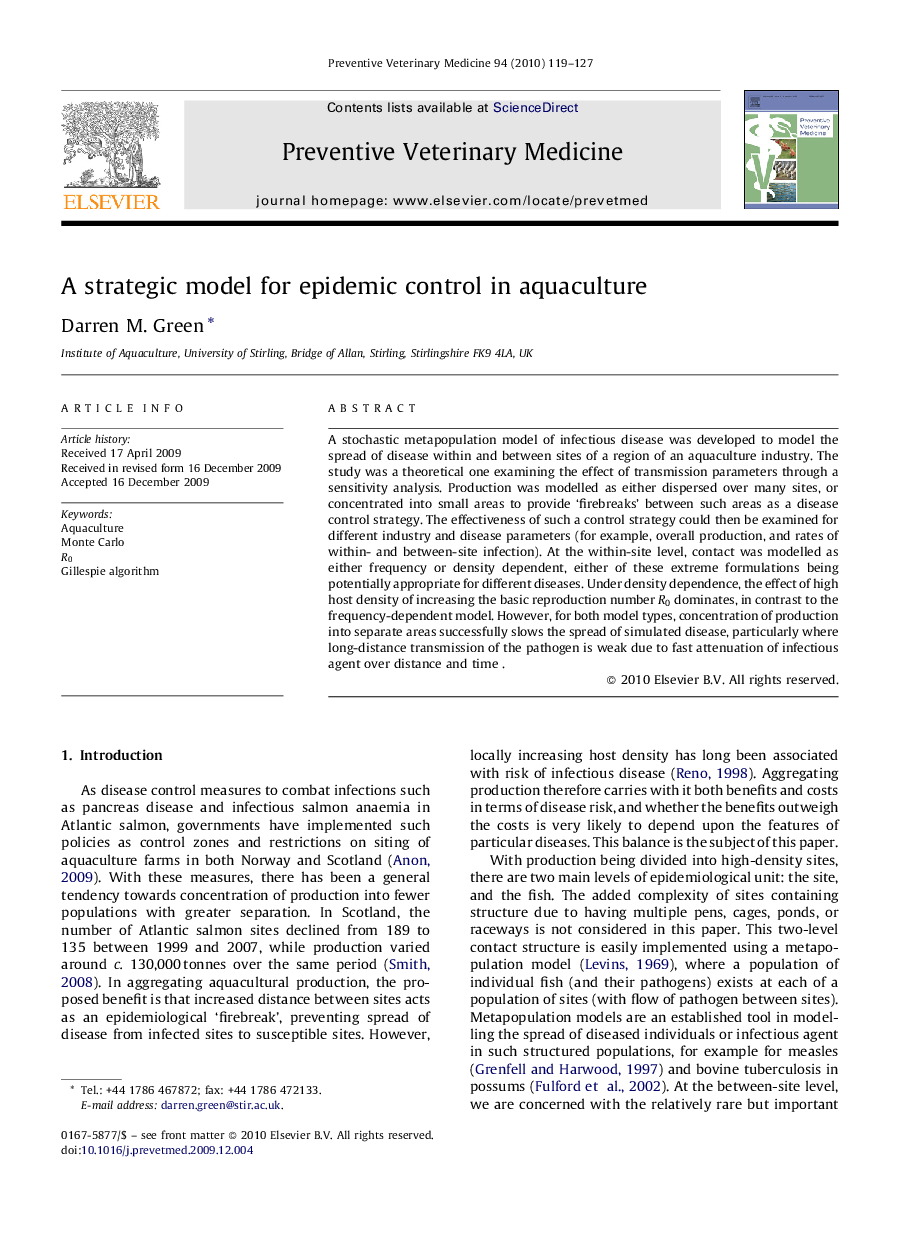| Article ID | Journal | Published Year | Pages | File Type |
|---|---|---|---|---|
| 2453011 | Preventive Veterinary Medicine | 2010 | 9 Pages |
A stochastic metapopulation model of infectious disease was developed to model the spread of disease within and between sites of a region of an aquaculture industry. The study was a theoretical one examining the effect of transmission parameters through a sensitivity analysis. Production was modelled as either dispersed over many sites, or concentrated into small areas to provide ‘firebreaks’ between such areas as a disease control strategy. The effectiveness of such a control strategy could then be examined for different industry and disease parameters (for example, overall production, and rates of within- and between-site infection). At the within-site level, contact was modelled as either frequency or density dependent, either of these extreme formulations being potentially appropriate for different diseases. Under density dependence, the effect of high host density of increasing the basic reproduction number R0R0 dominates, in contrast to the frequency-dependent model. However, for both model types, concentration of production into separate areas successfully slows the spread of simulated disease, particularly where long-distance transmission of the pathogen is weak due to fast attenuation of infectious agent over distance and time $$.
